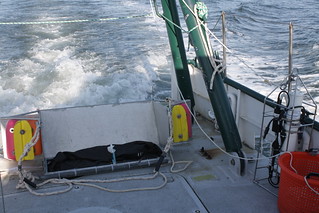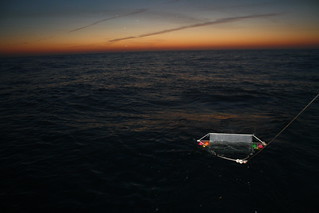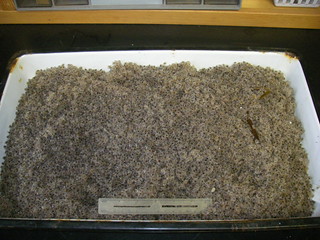While I might not have traveled far to reach the Sea Grant office in the same campus I spent the last four years roaming around, this last week was no short of surprises in the town I call home.
The Sea Grant Office is located in the Kerr Administration building on OSU’s main campus, and in my first week I not only became familiar with the bustling office, but also some of the other Sea Grant affiliated spaces on campus, including a top-secret video editing room where the Sea Grant sponsored videos are put together, and also another extension office in Ballard Hall where invasive species expert Sam Chan works, among others.
After getting acquainted with all of the different Sea Grant people and places around Corvallis, I got settled in at my cozy desk in the heart of Sea Grant’s main office. As a Marine Science and Policy intern, I was originally selected to work on marine science and policy event planning during the course of the summer, but I soon learned that my projects could become diversified because of a recent buzzing issue in the office.
In the wake of the hardly inconspicuous arrival of tsunami marine debris on the West Coast, I found myself getting in on the action as state and federal agencies continue their efforts to decide what to do in order to prepare researchers and the public to deal with eminent debris. On my first day in the office, I got to sit in on a conference call between Corvallis Sea Grant and those at Hatfield Marine Science Center (HMSC) while topics related to marine debris were covered, ranging from how the public has been responding and what types of misconceptions they might have; to research proposals being submitted to Sea Grant by various researchers who want to take advantage of this opportunity to gain insights into oceanographic dynamics and invasive species. This call was exciting to listen to, especially because it gave me an important look into how agencies such as ODFW, NOAA and Sea Grant communicate within and between themselves, and how action plans are developed in response to issues that affect multiple spatial and temporal scales simultaneously. This call also brought up many important points about the challenges in educating the public in such a short amount of time about how to respond to these types of issues. In the call it was brought up that at least one member of the public interpreted the recent arrival of the dock to mean ‘bad science’ on behalf of NOAA researchers and other scientists who predict(ed) most debris to arrive in October. I was surprised to hear this interpretation and I, among others, were curious what other misconceptions about marine debris the public might have, and consequently, how to address these misconceptions. Instantly, an idea for a research project began to brew. Fortuitously, just as my wheels began to turn, during the call two of my mentors Jenna Borberg and Sarah Kolesar mentioned that there was at least one eager intern willing to work on this, or related projects this summer.
While Sea Grant and the other agencies continue to hash out who’s doing what and when, I began work on some of my other event planning projects, namely the Heceta Head Coastal Conference (HHCC). The opportunity to work on this event in particular was one of the original reasons I was interested in this position, since I was able to attend last years conference and was particularly compelled by the unique Oregon-specific and interdisciplinary approach. Even though I attended last year’s conference, I first spent some time familiarizing myself with the programs from previous years. Next, I began work on a Facebook page for the conference (facebook.com/HecetaHeadCC) where Oregonians and beyond can learn about HHCC, “like” it, or attend this year’s event! I know this sounds unbelievably simple, but between figuring out my desk’s MacBook and finding all the appropriate information, pictures, and PDF conversions, this actually took quite a bit of legwork. After completing this task, I began drafting invitations to potential speakers at this conference. I was especially excited to see a great diversity of scientists, politicians, and economists on the invite list this year. Similar to the facebook page, a seemingly simple task came with a whole new set of challenges. In particular, finding the ‘right’ way to address people from disciplines outside of science was novel to me, as was finding and naming the appropriate credentials to discuss in their letter in order to demonstrate the value they would bring to the event. After I finished the letters and got some feedback from Sarah, we decided they were ready to be reviewed by my mentor, and director of Oregon Sea Grant, Stephen Brandt.
As I prepare for the next week of work, I find myself curious to see what new adventures and surprises this week will bring, because if there’s anything this week has taught me most, is that there is no shortage of opportunities for work in the office and I can’t wait to dive in.




